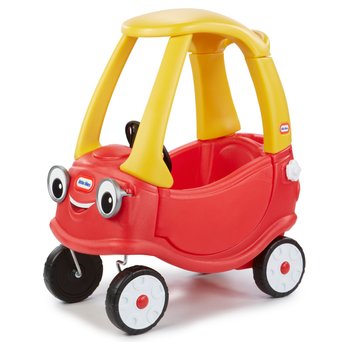Best Info To Choosing Electric Kids Cars
Best Info To Choosing Electric Kids Cars
Blog Article
What Do I Need Know About Battery Life And Charging Time Of An Electric Ride-On The Kids' Car?
It is important to understand the life span of your battery for your electric ride-on car for children and the time it takes to recharge. This will ensure that you can play for hours without interruption. This is all you need to be aware of about the battery type.
The majority of electric ride-on cars for children utilize rechargeable batteries. They typically are lithium-ion batteries or lead acid batteries. The lead-acid batteries take longer time to charge and have a shorter battery life.
Battery Capacity
The battery size, which is measured in amperehours (Ah) or watthours(Wh), will determine the amount of time a vehicle can last on a single charge. Batteries with higher capacity provide a longer playing duration before the need to recharge.
Run Time -
The time of a car's runtime is how long the vehicle is able to run continuously on one battery charge. This can vary depending on various factors like battery's capacity, motor's power, terrain, as well as the weight of the rider.
Common run times for electric vehicles vary between 30 minutes and 2 hours on a single charge. Certain battery packs with high capacity may provide longer run times.
Charging Time
The charging time is the length of time needed for the battery to fully charged after it is exhausted. Charging times vary depending on the battery's capacity, charger specifications, and the charging method.
The charging times vary from 8 and 12-hours for a complete charge for electric rides-on automobiles. Some models might offer faster charging times, especially using lithium-ion batteries.
To ensure safety and long-lasting battery life, it is essential to charge the battery in accordance to the instructions of the manufacturer. The battery's performance and life span may be affected by charging too much or undercharging.
Charging Method Charging Method
Electric ride-on vehicles are usually equipped with a charger which connects to a standard home outlet. Certain models come with fast-charging capabilities or a smart charging system which monitors the state of charge and adjusts the rate of charging accordingly.
To ensure that there is no damage to the battery or electrical system Make sure the charger and port are compatible with chargers provided in your ride-on car.
Additional Batteries -
Certain electric vehicles allow you to purchase additional batteries or batteries to increase the duration of play. If you have additional batteries, you could easily swap out depleted ones for fully-charged ones to reduce the time between repairs.
Understanding the battery and charging time of a kid's vehicle will ensure that you and your child have fun, uninterrupted playtime as well as exciting adventures. Battery life can be increased by charging the battery regularly and employing proper charging methods. Read the recommended McLaren kids car for more tips including childrens electric cars, toy with car, two seater electric cars, childs electric ride on car, kidscars, electric car ride, remote control childrens car, toy cars toy car, race car toy car, a toy car and more. . 
What Are The Best Models For Kids Cars? Designed For Indoor And Outdoor Use?
Indoors or out, kids' cars are designed to work in various circumstances and in different environments. The models are made differently - Indoor Use Cars
Dimensions and weight- Cars made for indoor use will have a smaller dimensions and weight which makes them more able to maneuver in small space. These include playrooms and living spaces. They're small enough to fit through tight corners and narrow passageways without causing damage to walls or furniture.
Low Ground Coverage - Vehicles intended for indoor use feature an extremely low ground coverage to avoid them getting stuck or trapped against obstacles like carpets or thresholds. This ensures seamless and uninterrupted movement over indoor surfaces without fear of getting stuck or tipped over.
Smooth Wheels The wheels of indoor vehicles are typically constructed from smooth materials such as rubber or plastic. This gives traction and grip for smooth surfaces such as flooring made of hardwood laminate floors, tiles. The wheels are made for indoor use, to reduce noise and to keep surfaces safe from scratches.
Limited Speed - Cars used to be used indoors usually have lower maximum speed to ensure the safety of operation and control within restricted areas. This helps prevent collisions and accidents caused by furniture, such as walls or obstructions found inside.
Outdoor Use Cars -
Construction that is durable - Outdoor cars are built using durable materials, such as metal or tough plastic, to withstand harsh handling and the elements of nature, such as sunlight, moisture and temperature variations. The cars are resistant to damage from the elements.
The higher the ground clearance, the better able they will be to deal with bumps and uneven terrain. This lets the vehicle traverse rough terrain without damage or a snag.
Traction Tires Car tires that are intended for use outdoors are often fitted with treads or patterns that improve grip and traction while driving on slippery or uneven surfaces. This aids in maintaining control and stability when driving on uneven terrain.
Weather Resistant - For outdoor use, vehicles can include components that are resistant to damage from environmental elements or moisture including waterproof casings and sealed electronics. They can withstand rain, mud, or even puddles with no loss of performance.
Outdoor cars are typically faster to accommodate the wide open spaces, and longer distances encountered outside. This could provide an thrilling and exciting riding experience for children who are exploring the outdoors.
Take note of these characteristics and features when choosing a vehicle to drive your child's car. It is designed to the environment and usage that you envision regardless of whether it's indoors, outdoors or both. You will be able to ensure an enjoyable, long-lasting and safe play experience. View the recommended JCB ride on digger for blog advice including ride a toy, ride on toy, ride of car, electric ride on cars, childrens electric ride on, electric toy car, toy with car, race car toy, kidscars, car on ride and more. . 
What Should I Be Looking For Before Purchasing A Kids Electric Car? What Are Pros And Con?
Before you purchase an electronic kids car There are a variety of things to think about to make sure that you select the best model for your child's needs and needs. Here are a few key factors to consider and details about prices as well as size, advantages and disadvantages.
Pick an electric car for your child according to the age and size your child is. Younger children and those with smaller sized bodies might prefer smaller and lighter models, whereas older or larger children may require larger vehicles with enough space to fit their needs comfortably.
Car Dimensions and Weight
Electric cars for kids are available in a variety of sizes. They range from small models to full-sized replicas. Take into consideration the weight and size of the car in relation to your child's age, size and power, and the space available for storage and play.
Price Range -
Prices for electronic children's automobiles can differ depending on the model, size, features, and quality of construction. Micro-sized models are generally more affordable, with prices between $50 and $200, while larger-scale models can range between $200 and $800 or more for top-quality replicas, which are licensed.
What are the pros and cons?
Pros -
Electric cars for kids provide hours of fun and imagination for your kids. It allows them to enjoy the thrill of driving their very own vehicle.
Motor Skill Development - Operating an electric vehicle helps children develop coordination, spatial awareness, and fine motor skills.
Electric automobiles encourage physical activity and outdoor play. They promote the pursuit of exercise and adventure.
Realistic Details - Many electric kids' cars have realistic features like working headlights, MP3 player compatibility and horn noises. These features improve the experience of playing.
Cons
High-quality electric kid's cars can be expensive, especially when you select licensed replicas.
Battery Life - Electric vehicles depend on rechargeable batteries to provide power, which might have a limited time of operation and require frequent recharging.
Safety Concerns - Electric cars can pose safety risks such as falls, collisions and entrapment if not used responsibly and with the supervision of an adult.
Maintenance and Assembly - Some electric vehicles require assembly on arrival, and also regular maintenance, including cleaning, battery care and occasionally repairs or replacements.
Features and Accessories
Think about the features and other accessories that are available in the electric kids' car, such as functioning headlights, horn noises, parental remote control, seat belts and storage compartments. Pick a car with features and accessories that are compatible with the child's needs.
The best electric children's car for you child will ultimately depend on the factors of the size and age of your child, along with their preferences and budget. Before deciding, take the time to look over and compare different types. Check out reviews and weigh the pros and cons. Check out the recommended remote control childrens cars kidscars.co.uk tips for site recommendations including electric ride along car, ride on car, ride on digger, ride on toy, kids electric cars, ride a toy, childrens electric ride on, toy the car, toy ride, childrens digger and more. .